You must be logged in to post a review.
€68.00
Figure to assemble and paint
Ref.: 12 – KAE
Weight: 250 grs.
Material: White Metal
Number of Pieces: 17
Historical Review:
King of the Belgians (1875-), was born at Brussels April 8 1875RE the younger son of Philip, Count of Flanders (1837-1905), brother of Leopold II and Maria von Hohenzollern-Sigmaringen. With the death of his elder brother Prince Baudouin in 1891 (unmarried at the age of 22), Albert became the third in the direct line of succession to the throne, becoming Count of Flanders (the title of the heir to the Belgian throne) after the death of his father in 1905. When his uncle, King Leopold II, died without issue in 1909, Albert succeeded him to the throne.
He received a thorough education and showed a marked taste for engineering and mechanics, studying shipbuilding and aircraft construction. He received military training at the École Militaire under General Jungblut and became an all-round sportsman, with a keen interest in mountaineering and later in aviation. On 2 October 1900 in Munich, he married Princess Elisabeth (born 25 July 1876 in Possenhofen), the second daughter of Duke Karl Theodore of Bavaria. Three children were born of this marriage: Leopold, Duke of Brabant (born 3 November 1901), Charles, Count of Flanders (born 10 October 1903), and Marie-Joseph (born 4 August 1906).
Prince Albert also travelled extensively: in 1898 he visited America and in 1908 England to study shipbuilding. In April 1909 he travelled to the Belgian Congo to familiarise himself with colonial conditions and returned in August of the same year.
On the death of Leopold II. on Dec. 1,1909 Prince Albert took the oath of fidelity to the Belgian constitution and became king under the name of Albert I. He occupied himself more especially with the organization of the army and in May 1913 gave his assent to the law which was designed to secure for Belgium an army of 350,000 men. He also interested himself in various social and legal reforms, while his scientific tastes did not prevent him from becoming a friend of art and literature. The poet Verhaeren and the painter Laermans were on friendly terms with the royal family, the latter receiving personal attention from the Queen when he was threatened with the loss of his sight.
On Aug. 2, 1914, when the Germans sent their ultimatum to Belgium, King Albert at once prepared to defend his country. He himself took command of the army. He only left Antwerp at the last possible moment, and then established himself with the army on the Yser. During the whole of the war he remained with the troops, having his headquarters at La Panne, where he was exposed to the risk of enemy bombardments. He made continual visits to the front-line trenches, and even surveyed the enemy’s lines from an aeroplane. The Queen remained with him, acting as a nurse in the Hôpital de l’Océan at La Panne. She also interested herself deeply in the welfare of the soldiers in the trenches and superintended the establishment of canteens and aid posts. Prince Leopold, King Albert’s elder son, lived by his father’s wish the life of a simple soldier in the 12th Regiment.
When the general offensive of Oct. 1918 was undertaken, King Albert was appointed commander of the northern army groups, consisting of both Belgians and French, which captured the forest of Houthulst, the Flandernstellung, Thourout, Ostend and Bruges, and forced the passage of the Lys. On Nov. 13, 1918, the King and Queen made their entry into Ghent, and on Nov. 22 into Brussels.
After the Armistice the King occupied himself actively with the improvement of conditions in his country, visiting the devastated areas, and contributing considerable sums to “King Albert’s Fund,” which was devoted to providing temporary shelter for sufferers from the war. He also undertook journeys to Brazil, Spain, France, the United States and England, with the object of studying trade conditions and finding new outlets for Belgian commerce. The popularity of the King and Queen, great even before the war, steadily increased, even the Socialist party taking many opportunities of expressing feelings of respect towards the royal family. King Albert declined the augmentation of his civil list which was offered to him by the Chamber immediately after the war.
The figure is taken from the photographic reports of the triumphal entry of the royal family into Brussels in November 1918. He is dressed in the review-order uniform of a general of the Belgian army. He wears the Adrian helmet and rides a fine grey horse.

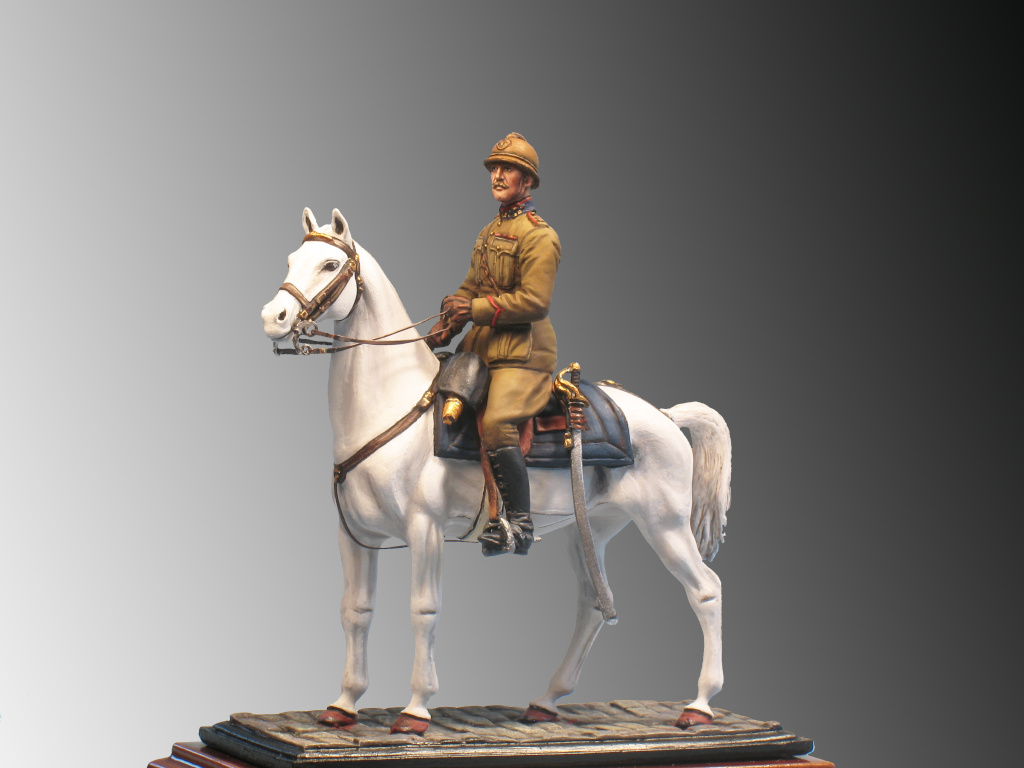
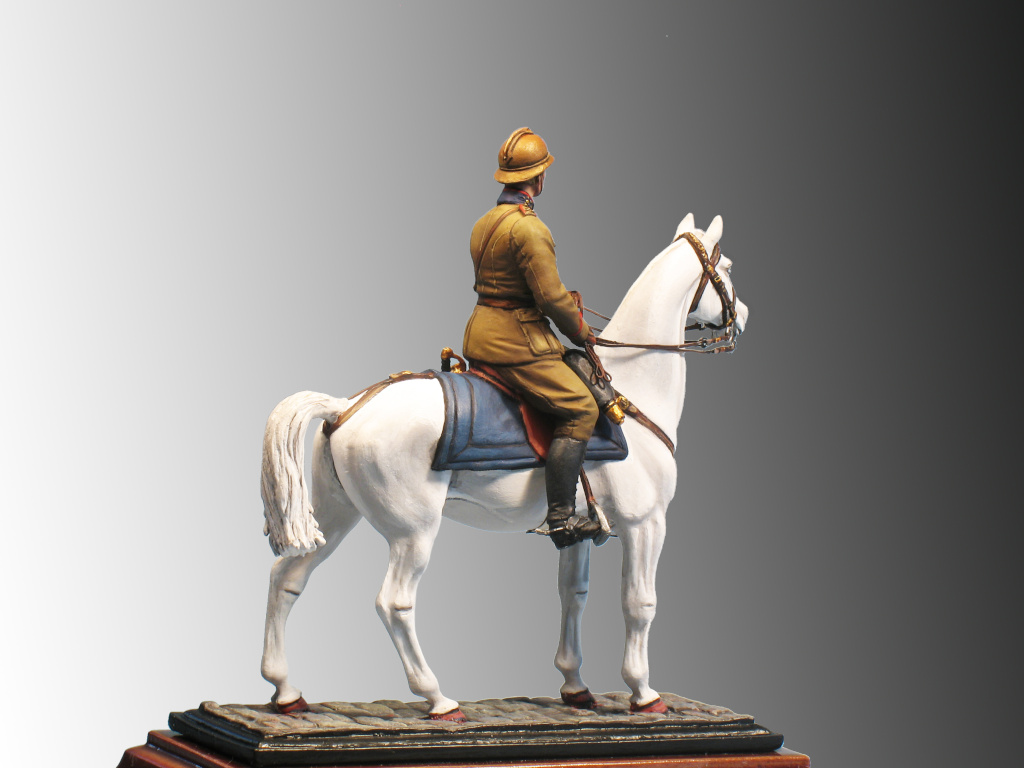
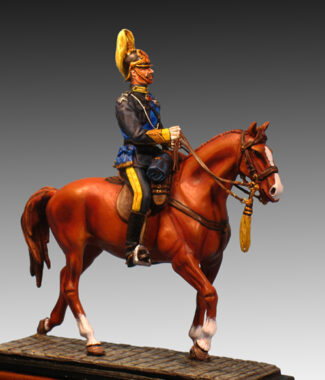
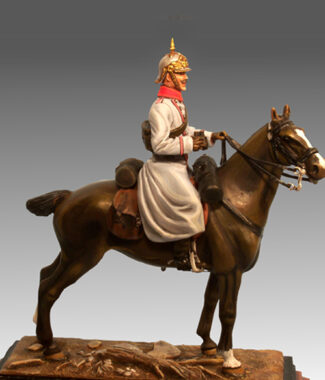
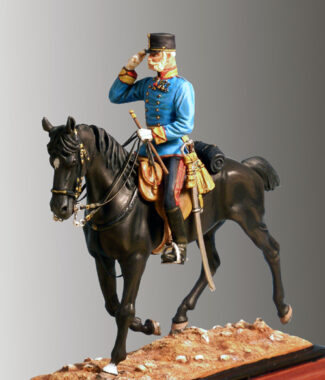
Reviews
There are no reviews yet.